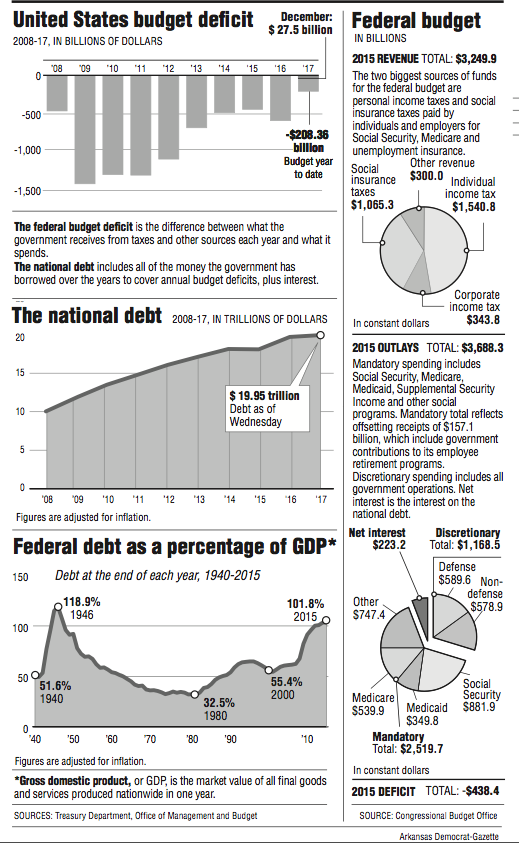WASHINGTON -- The federal government's budget deficit rose from a year earlier for the second-straight month, the latest sign of a rising financing gap.
The Treasury Department said Thursday that the December budget deficit was $27.5 billion, nearly double the $14 billion in December 2015.
In the first three months of the government's budget year, the deficit was about $208 billion, slightly below last year's total. But adjusting for calendar quirks that moved some large benefit payments into September, the deficit has worsened in the past three months.
The adjusted deficit for October through December was $230 billion, up about one-third from $174 billion a year ago.
The federal government's largest health care programs, Medicare and Medicaid, saw spending increase 5 percent and 6 percent, respectively.
December's deficit was largely driven by a 9 percent drop in revenue. Corporate tax receipts fell 6 percent, but the biggest drag was from a drop in earnings from the Federal Reserve. Payments from the Fed fell 80 percent.
The Fed is earning interest payments on its portfolio of Treasurys and mortgage-backed securities, purchased after the financial crisis to hold down interest rates.
Under a new law from Congress, the Fed paid most of those earnings to the Treasury in the government's 2016 budget year, resulting in a much smaller payment from the Fed last month.
Government spending also fell in December, but the drop was smaller than the decline in revenue. Spending fell 5 percent to $347 billion, led by a drop in Social Security payments.
A Section on 01/13/2017

